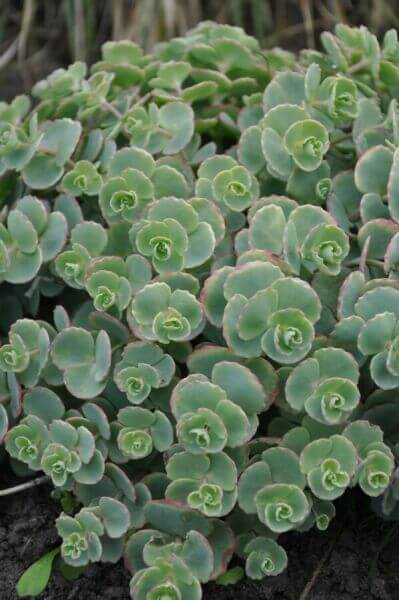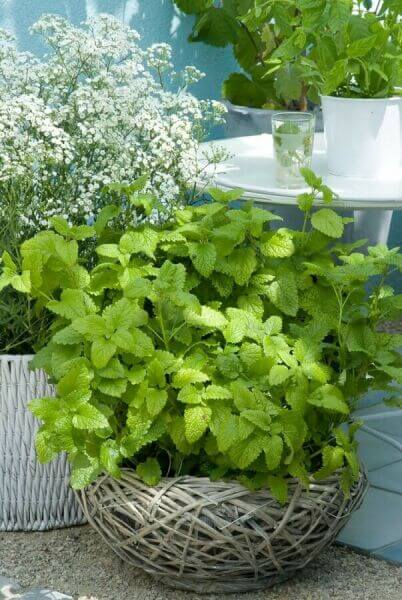Hedge Plants For Cottage Gardens
Hedge Plants For Cottage Gardens
Blog Article
Best Hedge Plants For Mediterranean Areas
Boost your garden's attraction with lavish hedge ranges such as Yew (Taxus), Thuja, Laurel, Photinia, and Bamboo, celebrated for their structural integrity and environmental advantages.
Yew and Thuja provide evergreen protection and winter season strength, while Laurel provides quick growth and broad, aromatic leaves.
Photinia includes seasonal charm with its dynamic red foliage, and Bamboo provides a low-maintenance, serene ambiance.
These hedges enhance air quality, lower noise, and produce tranquil, personal spaces.
Appropriate planting, spacing, and upkeep make sure vigorous growth and environmental consistency.
Explore how these rich ranges can elevate your garden's beauty and well-being.
Secret Takeaways
Change Your Garden With Lush Hedge Ranges
- Select Yew for its dense, evergreen growth and exceptional durability.
- Opt for Laurel for its fast growth and broad leaves, guaranteeing quick privacy.
- Select Photinia for its dynamic seasonal foliage, which turns a striking dark red.
- Make use of Bamboo for a low-maintenance, winter-hardy hedge with visual appeal.
- Area plants 2-3 per meter and prune frequently for optimum development and health.
Popular Hedge Plants
When changing a garden with lush hedge ranges, it's essential to consider popular hedge plants such as Yew, Thuja, Laurel, and Photinia due to their unique qualities and advantages.
Yew (Taxus) is highly esteemed for its longevity and dense, green growth, making it a prime choice for enduring landscapes.
Thuja is noted for its evergreen foliage and robust winter season strength.
Photinia includes seasonal vibrancy with red leaves that darken with time, developing vibrant visual appeal.
Laurel provides fast growth and fragrant, broad leaves, ideal for quick personal privacy.
In Addition, Bamboo is an exceptional option for ambiance, offering a low-maintenance, winter-hardy option that boosts the garden's visual with its stylish, swaying canes.
These selections cater to a variety of horticultural requirements and choices.
Benefits of Garden Hedges
Garden hedges offer a multitude of advantages, making them an important addition to any landscape. These natural barriers are affordable to implement and supply substantial wind security, enhancing air blood circulation and adding to noise decrease. The dense foliage of hedges like Thuja and Beech ensures personal privacy by obstructing visibility, developing a remote and tranquil environment.
Hedges likewise play a crucial function in microclimate regulation, supplying a stable environment that cultivates plant growth and decreases temperature changes. Their intricate leaf structures filter contaminants, enhancing air quality and contributing to a healthier garden environment.
Moreover, hedges excel in sound decrease, absorbing and deflecting acoustic waves to lower ambient sound levels. This double functionality of offering both acoustic and visual privacy enhances the general harmony and aesthetic appeal of any garden.
Planting and Maintenance Tips
For a successful hedge, precise preparation of the planting location is vital. Ensure the soil has proper pH and drainage to support strong root development.
Area the plants properly for the picked types. Water the hedge regularly throughout its preliminary development stage, changing as required with seasonal modifications.
Carry out a organized bug control and illness avoidance method, utilizing chemical or natural treatments when needed. Frequently examine for aphids, termites, and fungal infections.
Apply mulch to keep moisture and suppress weeds. Seasonal pruning promotes dense development and air blood circulation, necessary for plant health.
Following these standards will assist you cultivate a dynamic, well-kept hedge that enhances the beauty of your garden.
Spacing and Cutting Standards
Spacing and Trimming Standards
Correct spacing and cutting are vital for cultivating healthy, aesthetically appealing hedges. Sufficient spacing guarantees each plant receives enough nutrients, light, and air flow.
Follow these guidelines for optimal hedge maintenance:
- Spacing: Position hedge plants 2-3 plants per meter to motivate robust growth.
- Pruning Techniques: Regular pruning is important for maintaining wanted hedge height and shape. Trim brand-new development in summer and cut back older wood during winter.
- Seasonal Care: Adjust trimming schedules and techniques according to seasonal requirements to ensure plant health.
- Hedge Height: Frequently display and trim to preserve the desired hedge height and attain consistent aesthetic appeals.
Following these actions will ensure your hedge prospers, improving both the appeal and performance of your garden.
Choosing the Right Hedge
Selecting the Right Hedge
Picking the suitable hedge includes evaluating elements such as fully grown height, foliage density, and environmental durability. Effective hedge plant selection requires comprehending each types' growth qualities and site-specific adaptability.
For example, Yew (Taxus) provides exceptional longevity and dense growth, while Thuja is significant for its winter season resilience. Furthermore, thinking Browse this site about upkeep requirements is vital; fast-growing types like Laurel or Privet demand regular trimming, whereas low-maintenance choices like Bamboo or Ivy might be more effective for those looking for very little maintenance.
Ecological aspects such as soil type, light availability, and moisture conditions should also guide the selection procedure. This mindful technique makes sure the picked hedges will grow, supplying both visual and functional advantages to the garden landscape.
Shipment and Planting Recommendations
To guarantee your hedge plants prosper, they must be delivered by specialized couriers and planted promptly upon arrival.
Follow these essential steps for effective planting:
- Soil Preparation: Enhance the soil with raw material to improve drain and nutrient material.
- Planting Depth: Create a trench twice the width and equivalent to the depth of the root ball.
- Watering Methods: Water thoroughly after planting, keeping the soil regularly damp but not filled.
- Mulching: Use a layer of mulch to retain wetness and suppress weeds.
Customer Assistance and Service
Given the vital function of timely help in horticultural pursuits, our client support group is available 6 days a week through telephone, email, and social networks to provide skilled recommendations and swiftly resolve any concerns. Their devotion to quick action times guarantees consumer fulfillment by resolving questions related to plant health, ideal planting techniques, and maintenance schedules.

Reaction Time
-------------------
Telephone
Within 48 hours
This comprehensive support system, enhanced by an excellent 9.3/ 10 customer rating, highlights our commitment to enhancing the gardening experience for every client.
Frequently Asked Concerns
How Long Does It Take for Hedge Plants to Establish?
Hedge plants typically require one to 3 years to end up being totally developed, with the specific period differing by types and growing conditions.
Efficient care throughout this critical period is important for robust growth. Consistent watering, alert weed control, and proper fertilizer application are essential in promoting strong root advancement.
For instance, fast-growing types like Laurel might develop faster, while slower-growing ranges such as Yew may take longer. Thorough upkeep speeds up the facility procedure, leading to thick and healthy hedges.
What Are the Finest Hedge Plants for Personal Privacy?
The question of the very best hedge plants for personal privacy includes assessing evergreen and deciduous options.
Evergreen hedges like Thuja, Laurel, and Cypress provide year-round protection, making sure continuous privacy.
On the other hand, deciduous hedges such as Beech use seasonal privacy, shedding leaves in colder months.
Secret maintenance pointers for personal privacy hedges include regular cutting, fertilizing in spring, and appropriate spacing-- typically 2 to 3 plants per meter.
In addition, consistent watering and diligent weed elimination are essential for promoting healthy, thick growth.
Can Hedge Plants Attract Wildlife to My Garden?
Yes, hedge plants can draw in wildlife to your garden by supplying vital benefits like shelter, food, and nesting websites, thus enhancing regional biodiversity. For example, yew, holly, and laurel are exceptional for bring in birds, while ivy supports a variety of pests.
Nevertheless, it is necessary to keep in mind that there are some disadvantages, such as increased upkeep to manage insects and regular upkeep. Thoroughly choosing and maintaining hedge varieties can assist balance these disadvantages and advantages, ultimately promoting a dynamic and sustainable ecosystem in your garden.
Exist Any Blooming Hedge Plants Available?
Yes, there are flowering hedge plants available that can improve the appeal of your garden.
For example, Elaeagnus, also called Olive Willow, produces aromatic white flowers in the fall, adding a touch of beauty.
Photinia, another popular option, showcases lively red leaves that mature into an abundant green, creating a dynamic visual impact throughout the seasons.
To make sure these plants thrive, it's vital to practice proper pruning methods and seasonal upkeep, such as cutting brand-new growth in the summer and cutting back in the winter.
These steps will assist keep the health and visual appeal of your blooming hedges.
How Do I Avoid Bugs in My Hedge Plants?
To prevent pests in hedge plants, employ natural pest control techniques and preserve correct hedge care. Present helpful pests like ladybugs, which victimize harmful bugs, to develop a well balanced environment.
Frequently check your hedges for indications of problem and without delay get rid of any afflicted parts to avoid the spread. Guarantee the health of your hedges by applying balanced fertilizers and providing adequate water.
Make use of mulching to maintain soil wetness and appropriate spacing to decrease plant tension and promote robust development. These practices jointly help in decreasing insect concerns and maintaining a healthy hedge.
Conclusion
In essence, picking the right hedge ranges such as Yew, Thuja, and Laurel can change any garden into a peaceful sanctuary. These plants provide year-round greenery, boost aesthetic appeal, and offer useful benefits like noise decrease and wind protection.
Appropriate planting strategies, accurate spacing, consistent watering, and seasonal cutting are crucial for optimal growth.
Reputable shipment services and expert customer support guarantee a smooth experience from purchase to planting, making it simpler than ever to raise your outdoor area.
Garden hedges provide a multitude of advantages, making them a valuable addition to any landscape. These natural barriers are cost-efficient to execute and provide considerable wind protection, boosting air flow and contributing to sound reduction. The thick foliage of hedges like Thuja and Beech ensures personal privacy by obstructing exposure, creating a secluded and tranquil environment.

Pruning Techniques: Routine pruning is vital for preserving desired hedge height and shape. Trim brand-new growth in summer and cut back older wood throughout winter.
Report this page